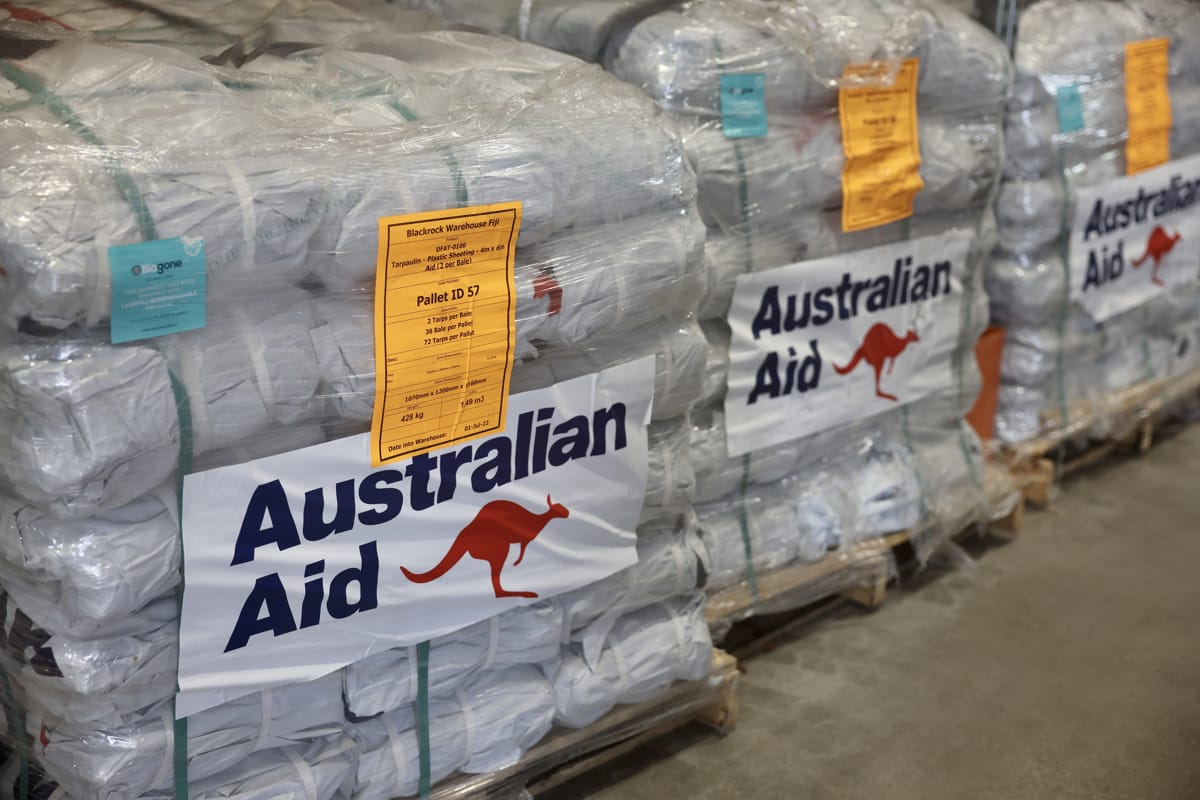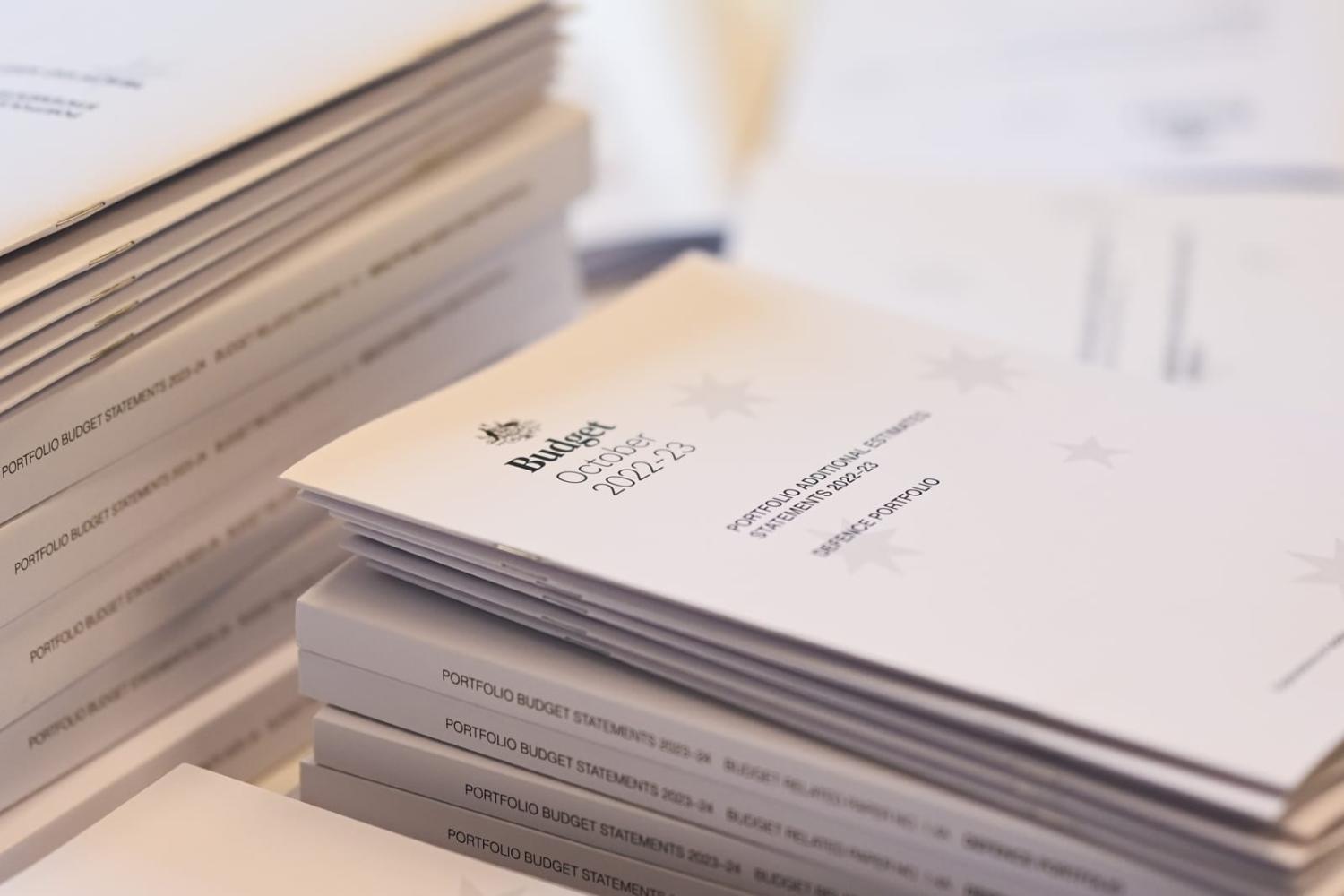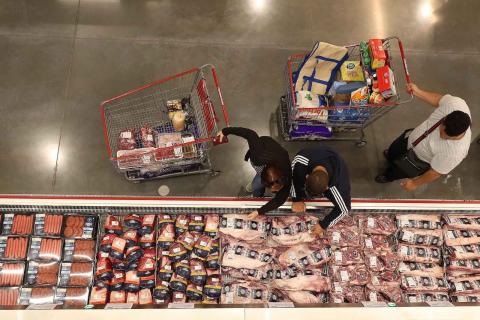Jobplomacy
For all the fine words in recent years about integrating the official arms of international relations policymaking in diplomacy, development and defence (the so-called Three Ds), this week’s budget has again demonstrated that the politicians care more about the J Word.
The first appearance that international relations made in Treasurer Jim Chalmers budget speech on Tuesday was when he declared that “the AUKUS (submarine) agreement will directly support 20,000 high‑skill, high‑wage jobs over the next 30 years in advanced manufacturing and broaden and deepen our industrial base.” Then it was back to basics.
That wasn’t quite as catchy as Prime Minister Anthony Albanese’s now standard boilerplate about how buying a nuclear submarine will be like embracing the domestic manufacturing of cars in the 1940s. But it set the tone.
When it comes to analysing the interesting initiatives to stabilise the aid program and diplomacy in the budget, it is still hard to go past the way conventional cash aid is overshadowed by non-conventional aid, such as the Pacific labour scheme. And it is not just the handy fiscal alchemy involved in spending $370 million over four years to expand the import of Pacific workers in return for getting an offsetting $300 million boost to tax revenue.
DFAT notes the scheme “continues to make a valuable contribution to economies across the region, including Australia’s (my emphasis).” And foreign minister Penny Wong’s points out that the expansion will contribute to reducing workforce shortages in Australia, thereby ticking boxes with employers everywhere from aged care to apple farms, along with “strengthened worker protections and compliance operations in Australia”.
Better integration of diplomacy, defence, and development makes a lot of sense in an uncertain world. But advocates need to understand that just as a Coalition government needed to watch its right flank in this space as it increased aid during the pandemic, a Labor government needs to mind its left flank as its cost-of-living support looks modest amid the spectre of defence largesse.
Swings and roundabouts
While international relations spending got scant attention in the Treasurer’s speech, the budget nonetheless contains some tantalising hints about future policy, offset by some doleful old realities.
The expansion of the Emerging Markets Impact Investment Fund (EMIIF) by $210 million over four years would seem to suggest that the still unreleased development finance review is going to take a middle of the road approach to reform rather than embrace a wholesale overhaul via, for example, the creation of a new development finance institution.
And the EMIIF offers the same sort of financial alchemy involved in the Pacific labour scheme with the budget noting that expanded support for mobilisation of private equity and loan finance means this notional spending will actually increase the underlying aid budget cash balance.
While the completion of the latest DFAT capacity review has raised hopes for increased funding, most recently backed by the Defence Strategic Review, the budget money for a “effective foreign service” is more like the new funding for the country’s national cultural institutions – cleaning up past underfunding. So, most of the $377 million extra money goes to funding overseas property costs, a better cables network and the increasingly cumbersome alignment of state government foreign relations with national policy.

Nevertheless, cleaning up DFAT’s back-office arrangements should set the scene for more creative diplomacy in future. However, in the context of the debate about better integrating the three Ds, it is quite striking that DFAT has only received an extra $357 million over four years for improving its core functions in the first such significant fix-up money for a long time. By contrast, its constituent agency the Australian Secret Intelligence Service has received yet another handsome annual funding boost of $469 million over four years, this time to “modernise.”
Leg up ... or down
The most curious part of the budget’s spending outlook is the commitment to index development aid funding by 2.5 per cent annually – but not starting until 2027–28 for a total of $8.6 billion over the ensuing decade.
This break from the normal four year forward estimates approach to government spending is a welcome effort to restore some stability to aid funding after the whipsaw changes seen under the recent Coalition governments which involved initial talk of indexing, then harsh cuts, and then pandemic era increases that weren’t regarded as conventional overseas development aid (ODA). In that context it does provide at least a positive foundation for the recommendations to come from the review of aid now under way. And there is welcome immediate new funding for better aid transparency and management.
But Wong and International Development Minister Pat Conroy don’t make much of the indexing initiative in their budget press release, presumably because they are aware it will be criticised as much as praised as it implies a long-term decline in aid spending as a share of national income. Development Policy Centre projections suggest the share will fall to below 0.15 per cent of gross national income by the end of the ten-year commitment period compared with 0.2 per cent now.
That arguably puts even more pressure on the government to come up with some creative new approaches to aid operations as opposed to cash spending when it responds to the review findings.
And on that note, it is worth noting how much money is now being channelled to Papua New Guinea outside of conventional aid. The budget shows how almost $2.9 billion has been provided over the past three years via loans to the PNG budget, loans to a gas project and infrastructure funding under the Australian Infrastructure Finance Facility for the Pacific. That’s getting close to twice the ODA, without accounting for defence spending.
Peas and thimbles
It says a lot about where the real financial largesse sits in the international relations spending envelope that this year’s version of the Pacific Step-up comes largely at the grace of the Defence budget.
The Enhancing Pacific Engagement program in the DFAT part of the budget involves spending $1.9 billion over five years and superficially looks like a real Team Australia effort with 11 agencies apart from DFAT listed to play a role.
But the bulk of this sending comes from existing resources of Defence (reportedly $923 million), the Department of Employment and Workplace Relations (for Pacific labour), and redirecting money from the last Coalition budget more than a year ago. And the Defence provision of security infrastructure in line with the Strategic Review recommendations and more than $300 million over four years in Australian Federal Police spending is not considered official development aid.
Indeed, after the defence reshuffled spending, the non-aid police spending and the near self-funding Pacific labour scheme, there is very little left of this latest phase of enhanced Pacific aid engagement. But the Defence Strategic Review set the scene for this reshuffling to fund national security in a cost-of-living budget environment with recommendations allowing the government to fund $19 billion in new spending over five years from savings elsewhere in the portfolio.
The other interesting strategic “reprioritisation” in the trade area is the winding back of the Export Market Development Grants scheme to save $69 million in 2025–27. That will just about fund new spending to support the latest United States economic diplomacy initiative in this region – the Indo-Pacific Economic Framework (IPEF) – and business engagement under the soon to be released Economic Strategy for Southeast Asia.
The $32 million budgeted for the IPEF would appear to be quite a significant effort by Australia to help the Biden administration get its more tailored successor to the old Trans-Pacific Partnership (without China) over the line with Asian countries when there seems to have been a relatively lethargic response so far.
Meanwhile the Albanese government has given new life to one of the few remaining legacies of the Gillard government’s distinctly more optimistic approach to the region in the 2012 Australia in the Asian Century white paper. The National Centre for Asian Capability, run by Asialink Business, has been refunded notionally as part of DFAT’s Southeast Asian economic strategy, but the $14.9 million over four years actually comes from the Department of Industry, Science and Resources.
Building the base
After a month of debate about geo-economic fragmentation from the European Commission president Ursula von der Leyen to the International Monetary Fund (IMF) to United States Treasury secretary Janet Yellen, the budget has finally provided the first considered statement from the Australian government.
The Treasury says the IMF estimate that trade fragmentation could reduce long-term global output by up to seven per cent is “especially relevant for a medium‑sized trading nation such as Australia.”
Noting that there is growing strategic rivalry in the Indo-Pacific area, it warns that this sort of instability is historically associated with tighter financial conditions, lower investment and employment, as well as a higher probability of negative economic shocks.
Nevertheless, despite this implied tighter budget environment underlined by all the reshuffling above, the country’s chief fiscal manager backs increased international relations spending saying:
Australia’s response to this changing environment requires new investments in diplomacy, development, defence and national security, at a time of increased fiscal pressure.
And despite traditionally being sceptical of government-led industrial policy, the Treasury has, perhaps not surprisingly, now bought into its boss’s enthusiasm for treating the AUKUS submarine project as a job creation scheme. It says:
Implementing the (Defence Strategic) review’s recommendations will create opportunities to build our sovereign industrial base and create high-skilled jobs, while generating additional pressures in areas such as manufacturing, infrastructure, education, training and workforce development.

